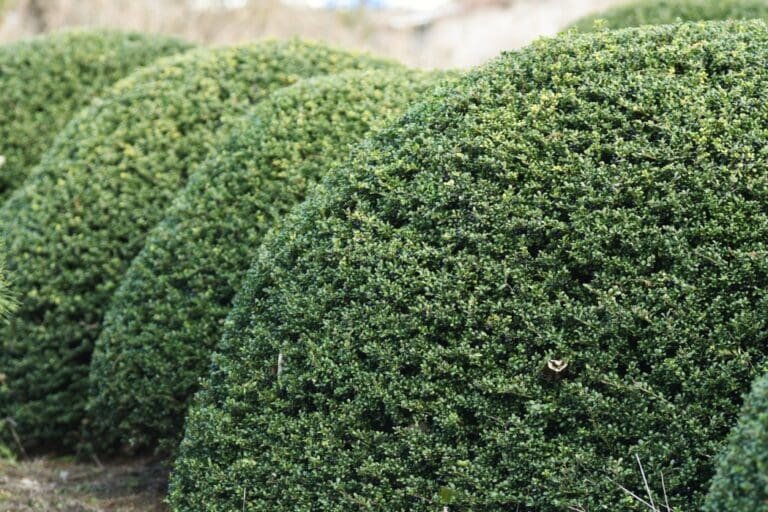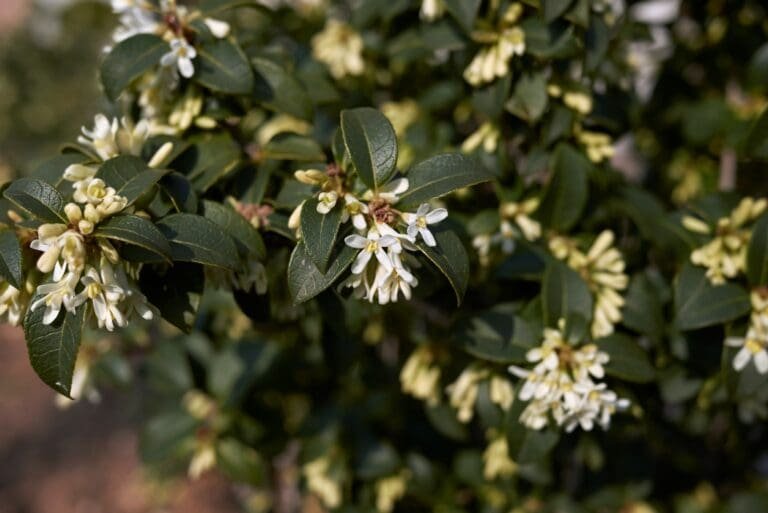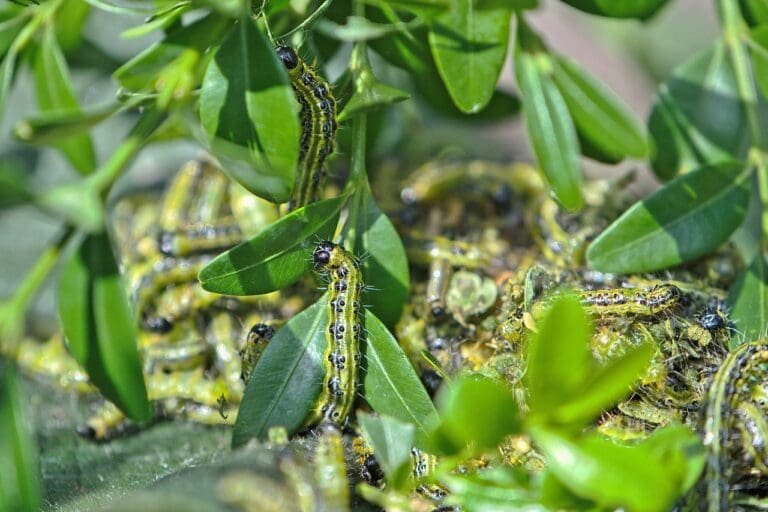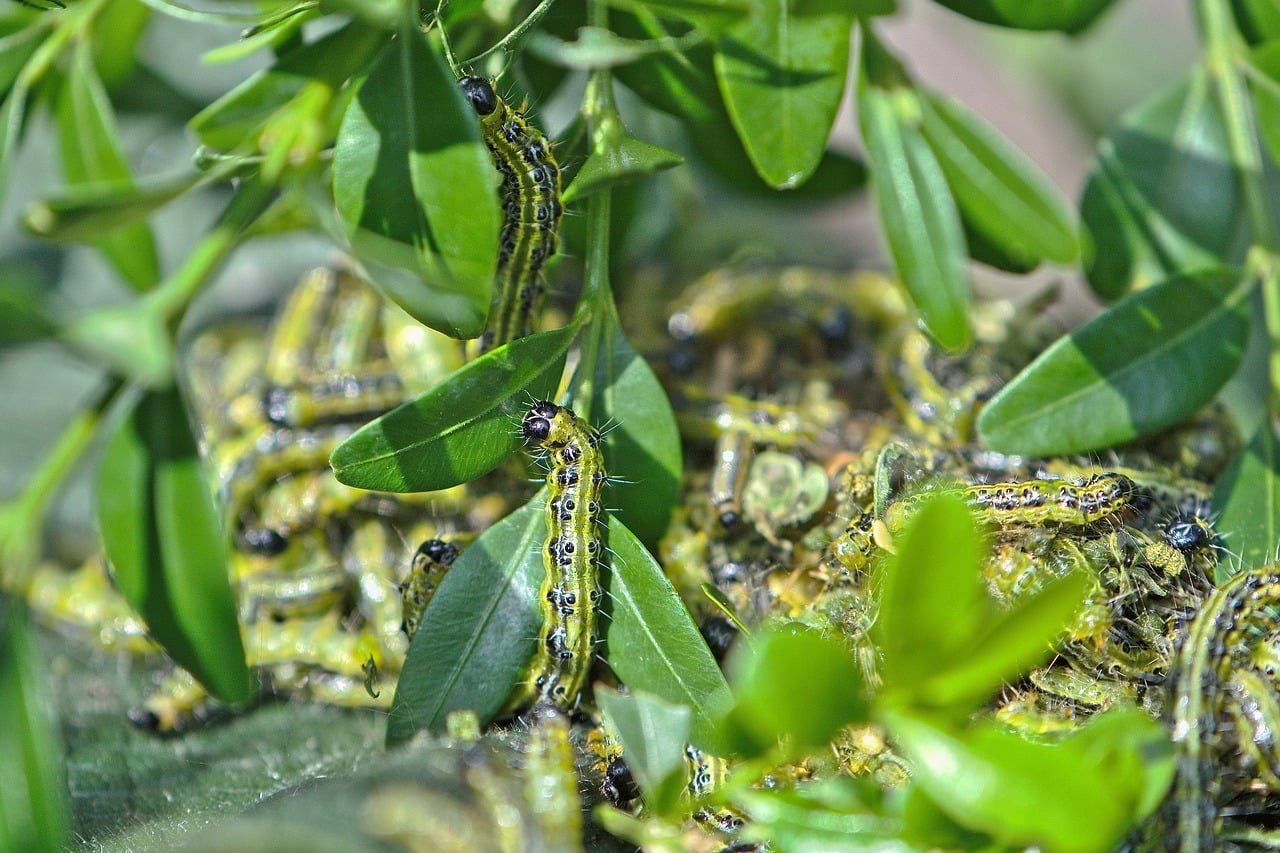You’re probably aware of the growing concern over box blight that’s been wreaking havoc on our beloved buxus (box) topiaries. The devastating fungal disease can turn our carefully crafted living sculptures into sad, brown patches almost overnight.
This challenges us to explore fresh alternatives, and that’s exactly what this blog post is all about. Let’s delve into some fantastic blight-resistant alternatives to our traditional box topiary.
This post contains affiliate links which means we may make commission from any qualifying sales with no extra cost to yourself.
What is Box Blight?
Box blight is a fungal disease that affects Buxus (boxwood) plants. It’s caused by two types of fungi, Cylindrocladium buxicola and Pseudonectria buxi, and results in leaf spots, stem streaks, and defoliation.
The disease thrives in warm, damp conditions and can spread quickly, causing substantial damage to affected plants.
Top Tip
When selecting alternatives for box topiary, carefully consider factors such as light conditions, desired shapes, and personal aesthetic preferences to choose the best fit for your unique garden.
Best Box Topiary Alternatives in the UK
1. Prunus lusitanica (Portuguese Laurel)

Our first substitute is the graceful Prunus lusitanica. Often overlooked, this beauty is native to the Mediterranean region and comes with glossy dark green leaves that are simply eye-catching.
It’s well-suited for topiary due to its dense growth and ability to respond well to regular pruning. Plus, it’s resistant to the dreaded box blight.
One standout feature of the Portuguese Laurel is its small fragrant white flowers that bring an extra dash of charm to your garden.
2. Ilex crenata (Japanese Holly)

The Japanese Holly, or Ilex crenata, is another fantastic alternative. Remarkably similar to the buxus box in appearance, it offers the comfort of familiarity with added resilience.
Japanese Holly takes well to shaping, making it a suitable choice for those seeking to unleash their creativity. It’s also box blight-resistant and can thrive in varying light conditions – a win-win, wouldn’t you say?
3. Osmanthus burkwoodii (Burkwood Osmanthus)

Who says topiaries can’t engage all the senses? The Osmanthus burkwoodii, or Burkwood Osmanthus, provides an attractive topiary option with its lovely clusters of fragrant flowers.
This evergreen shrub is resistant to box blight and responds well to pruning. The sweet scent of its flowers is an added sensory bonus, creating an aromatic corner in your garden.
4. Pittosporum

From the variegated leaves of Pittosporum tenuifolium ‘Variegatum’ to the dark, purplish foliage of ‘Tom Thumb’, the species offers a wide array of options. Pittosporum shapes well to the shears and, while not completely immune, many varieties have demonstrated good resistance to box blight. This makes them worth considering for your topiary ambitions.
5. Euonymus japonicus (Japanese Euonymus)

Euonymus japonicus boasts a dense growth habit and stunning, dark green leaves that can feature intriguing golden or creamy-white edges.
Its versatility and enhanced resistance to box blight make it a great choice for topiary projects. Whether it’s spiral or a neat ball shape you’re after, Japanese Euonymus is up to the task!
6. Taxus baccata (English Yew)

Last, but certainly not least, is the classic English Yew or Taxus baccata. Its dark green leaves and durability make it an ideal candidate for long-lasting topiary pieces.
English Yew is known for its versatility and longevity. It can be pruned into nearly any shape and is another reliable alternative resistant to box blight.
Treating and Preventing Boxwood Caterpillar Blight

While exploring new plant alternatives is exciting, we also understand that some of you may want to preserve your existing buxus box topiaries. So, let’s discuss some strategies to treat and prevent boxwood caterpillar blight, a common pest problem contributing to the box blight issue.
Boxwood caterpillars can cause extensive damage by defoliating the plants and paving the way for box blight. Here’s how you can mitigate this problem:
Regular Inspections
If the infestation is not widespread, caterpillars can be removed manually. Don a pair of garden gloves and diligently pick off any caterpillars you spot.
Use of Insecticides
For more serious infestations, consider using a suitable insecticide. There are now product available which are not harmful to humans or the environment
Introduce Natural Predators
Encourage birds and beneficial insects into your garden. They can act as natural pest control, keeping caterpillar populations in check.
Proper Pruning and Disposal
If parts of your plant are heavily infested, prune these sections and dispose of them safely. Do not compost infected clippings, as this can spread the infestation.
By implementing these measures, you can significantly reduce the risk of boxwood caterpillar blight and help protect your beloved topiaries.

Final thoughts
Exploring alternatives to buxus box topiary isn’t just about saving our green spaces—it’s also an opportunity to embrace new species and inject diversity into our gardens.
We’ve covered some great alternatives, each with unique aesthetics and commendable resistance to box blight. From the glossy leaves of the Prunus lusitanica to the fragrant flowers of Burkwood Osmanthus, there’s plenty of options for a stunning, blight-resistant garden.
In conclusion, don’t let the threat of box blight dampen your topiary dreams. Take it as a chance to explore, experiment, and maybe even fall in love with a new plant species. After all, variety is the spice of gardening life!
Frequently Asked Questions
Q. Is Ilex crenata the same as box?
No, Ilex crenata, also known as Japanese Holly, is not the same as the traditional box plant (Buxus). However, it is often used as a substitute due to its strikingly similar appearance and greater resistance to common diseases like box blight.
Q. What’s the difference between Buxus and boxwood?
There’s no difference between Buxus and boxwood—they’re two names for the same plant. “Buxus” is the botanical name (genus), while “boxwood” is the common name. These plants are popular for topiary and hedging due to their dense, slow-growing habits and small leaves perfect for precise shaping.
Q. Are Buxus low maintenance?
Yes, Buxus plants are generally low maintenance. They require infrequent watering (unless in containers), can thrive in a range of soils, and need pruning only once or twice a year. However, keep in mind that they can be susceptible to certain diseases, like box blight and pests like the boxwood caterpillar.
Q. Is Ilex crenata good for topiary?
Absolutely! Ilex crenata is a fantastic plant for topiary. It has small, dark green leaves similar to those of Buxus, making it suitable for creating a range of shapes. Plus, it’s resistant to box blight, which gives it an added advantage.
Q. Can you use hebes as a hedge?
Yes, you can. Hebes are evergreen shrubs that come in various sizes and leaf colours, making them an attractive option for hedges. They’re best suited for small to medium-sized hedges and thrive in well-drained soils. They’re also quite hardy and can stand up to coastal conditions, which is a bonus for seaside gardens.



